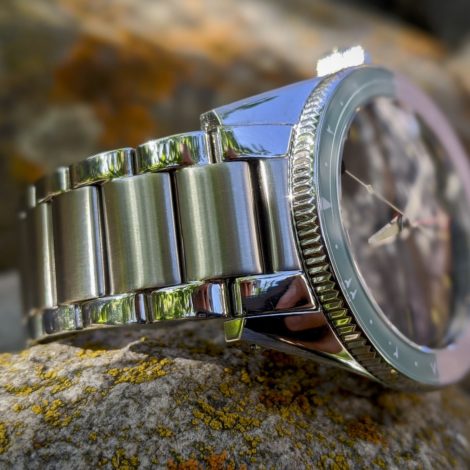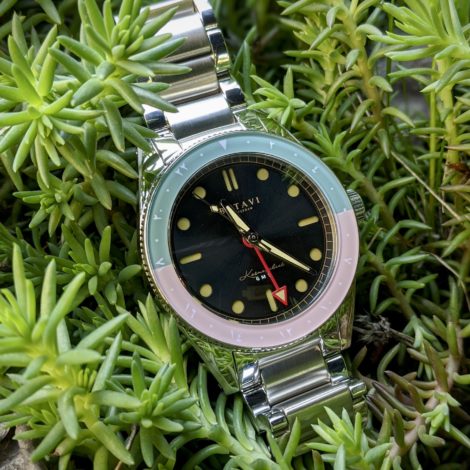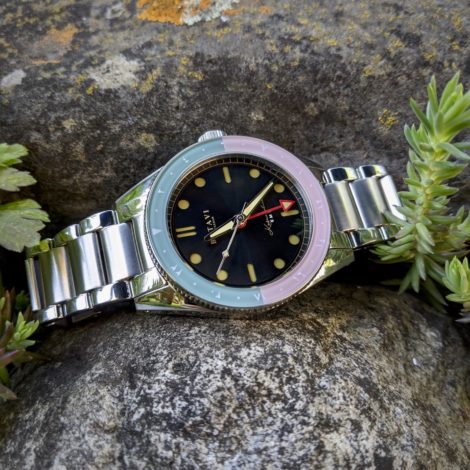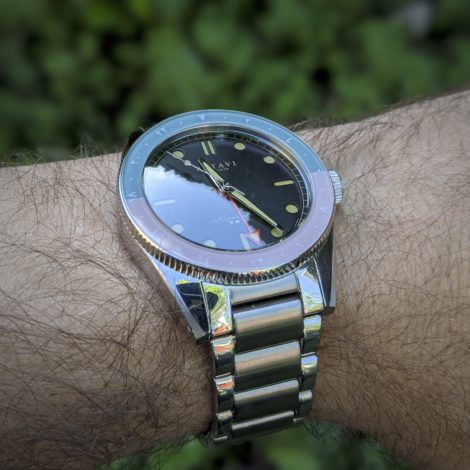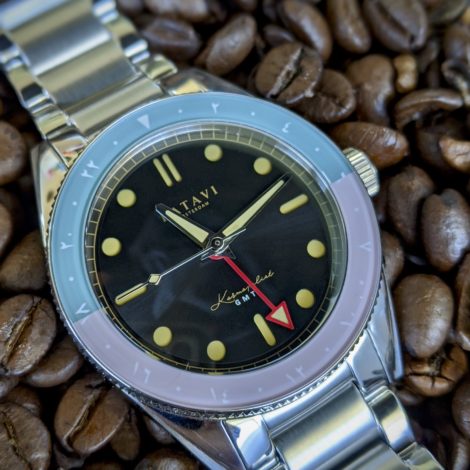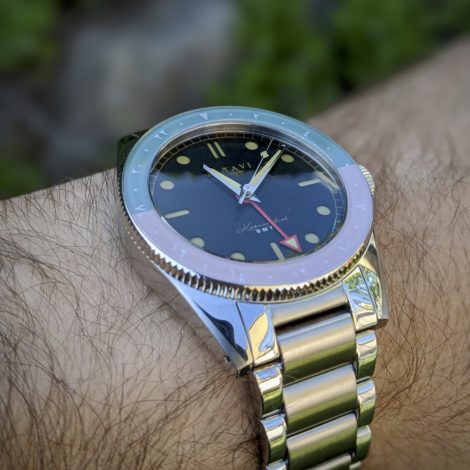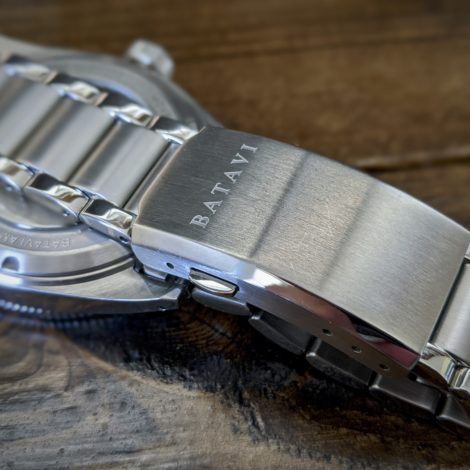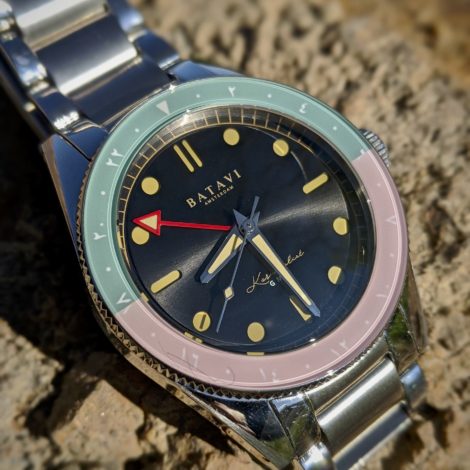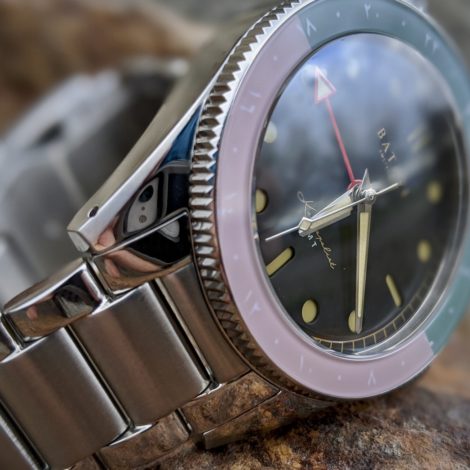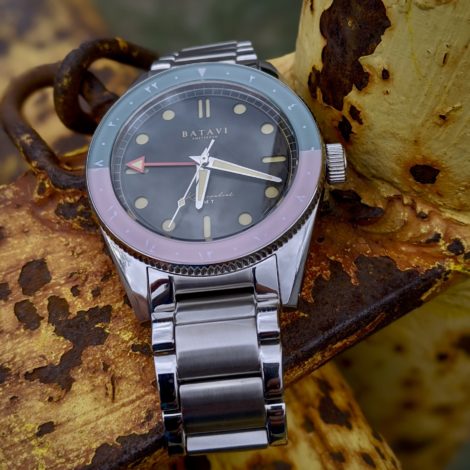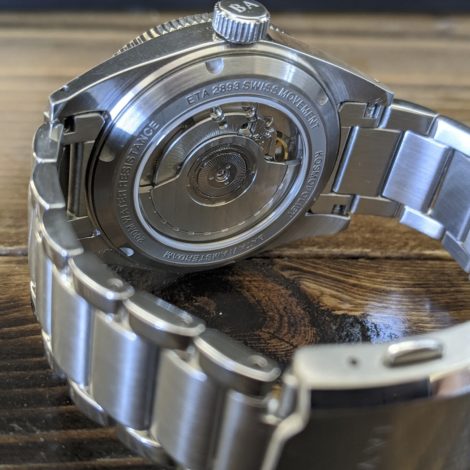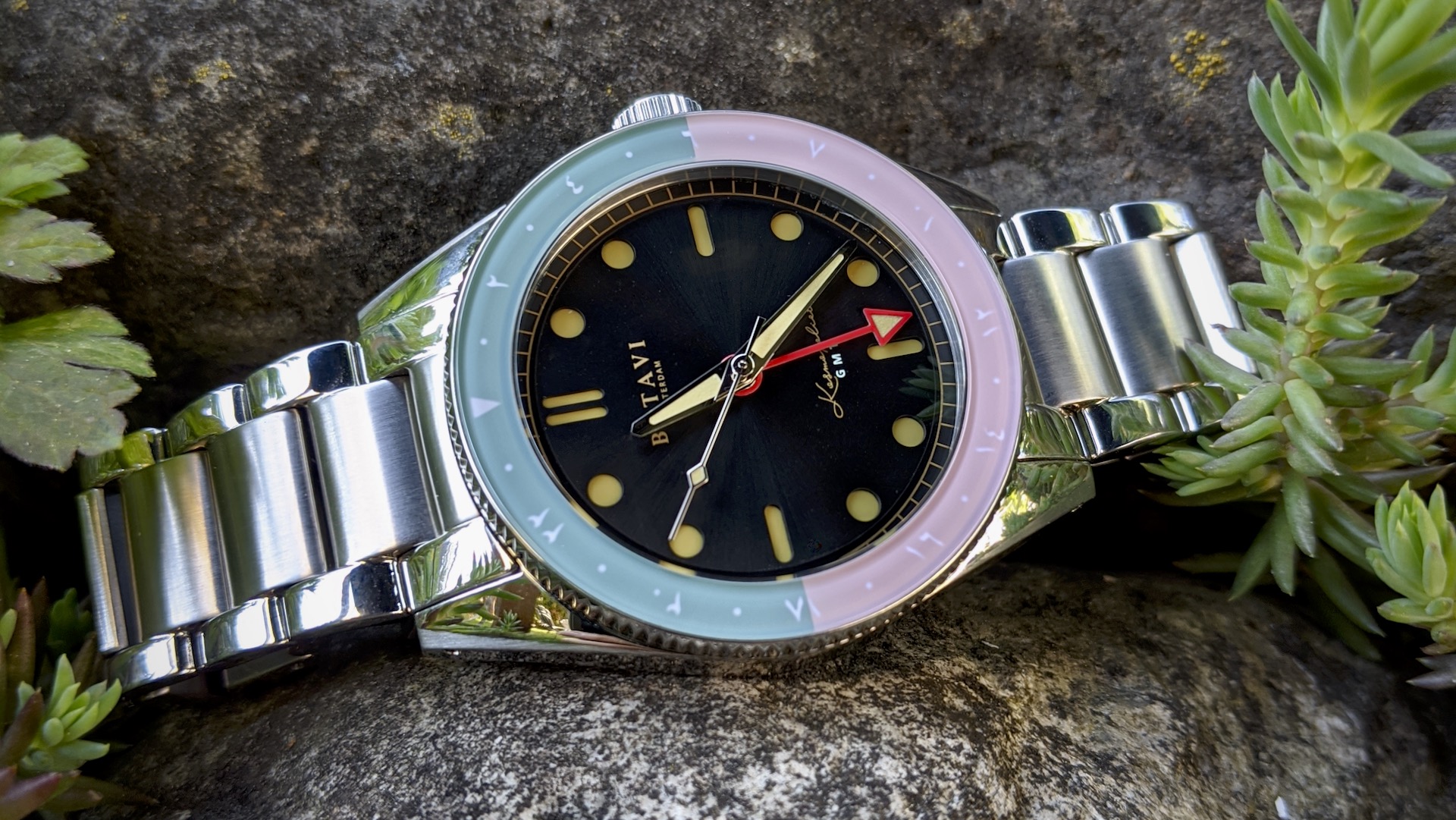
If you’re timing the launch of a new watch brand on Kickstarter, doing so in the midst of a global pandemic is likely not your top choice. Despite the inopportune (alright, downright terrible) timing, Batavi forged ahead as scheduled and its release of the Kosmopoliet GMT easily gained enough funding to make the project a reality. Ugur Mamak, the Amsterdam-based brand’s founder, was reticent about the launch (not surprisingly), but ultimately decided to go ahead and make the project a reality, with 2% of the profits donated to the Dutch Red Cross in support of COVID-19 relief efforts.
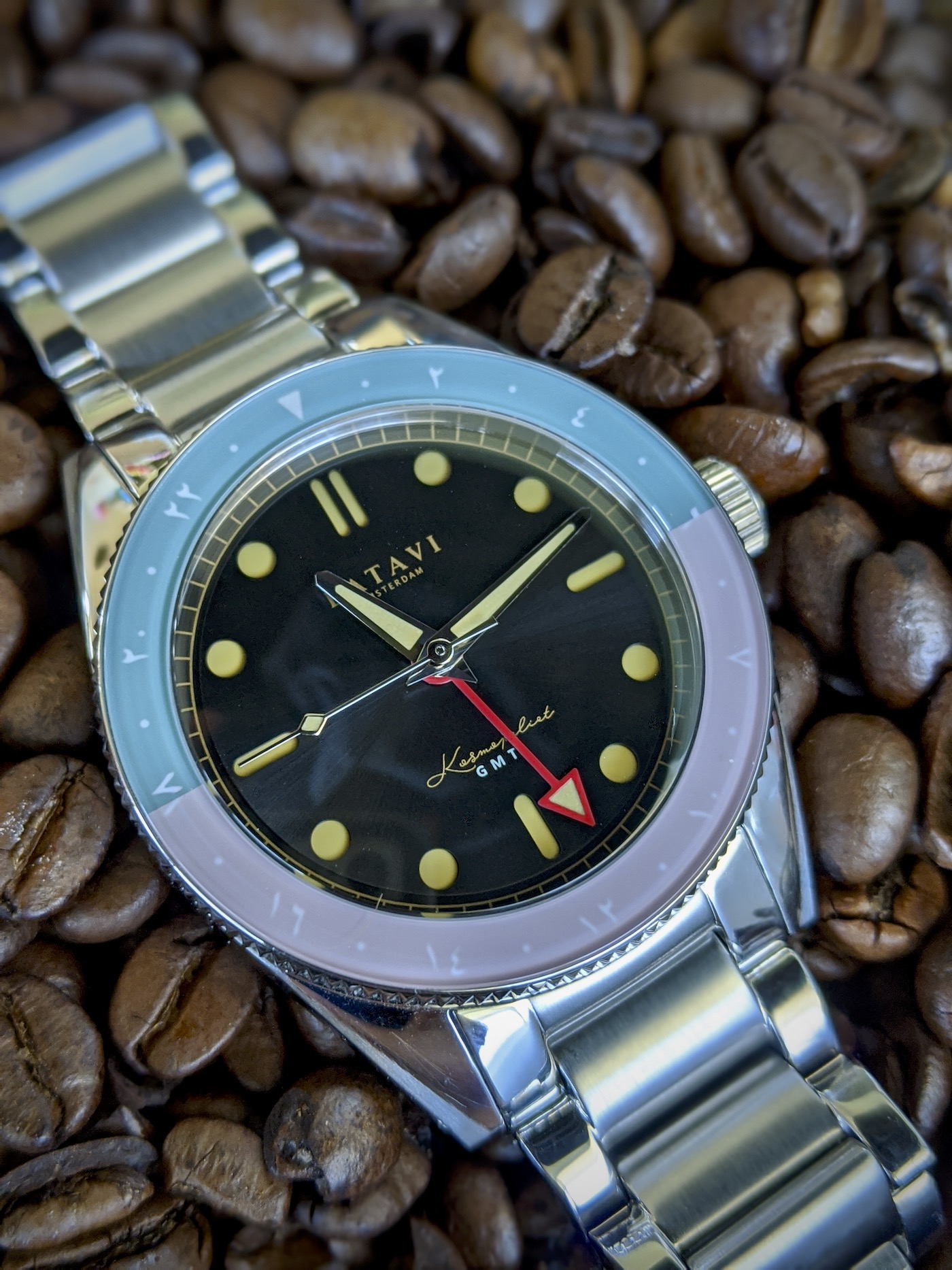
There are any number of reasons why some brands succeed and others fail to launch on Kickstarter, but if I were to wager a guess as to why Batavi was successful, I’d put my money on fresh design, striking colors, on-trend dimensions, and an extremely competitive price. Sure, the Kosmopoliet GMT has some vintage cues, but the overall effect is entirely unique. Batavi describes the Kosmopliet GMT as modern and playful, and it’s hard to argue with that description. When’s the last time you saw a pink and teal bezel on a modern watch? How about gray and magenta with a chocolate brown dial? Not enough for you? Batavi also added traditional Arabic numbers on the 24-hour bezel of the Medina colorway.

The Batavi Kosmopoliet launched with a wide range of funky colorways named after locations around the globe — appropriate for a GMT. While the names of some colorways make a lot of sense, like the green dial and bezel Amazon, others, like the Medina prototype featured here, require a bit more imagination. Then again, since I haven’t spent much time in old walled city centers in the Middle East, that might just be on me. What all the colorways have in common is a feeling of adventurous experimentation with color and tone. The colors won’t work for everyone, but to me the playfulness of the colors is a refreshing and endearing change of pace and simply bring a smile to my face.

The stainless-steel case of the Batavi Kosmopoliet GMT comes in at a modest 39mm diameter, 48mm lug-to-lug, with 12.3mm thickness and a 20mm strap width. Those dimensions should work well with a broad range of wrists; on my 6.75” wrist, it hits the sweet spot for everyday wearability. The case shape is traditional but nicely executed with a high-polish finish (note, the production version will feature brushed sides), beveling on the lugs, and drilled lugs for easy strap changes. Keeping with the vintage aesthetic, the Kosmopoliet GMT eschews crown guards but does feature a signed screw-down crown and 200m of water resistance. The watch features a double-domed sapphire crystal on top and a matching sapphire caseback displaying the ETA 2893-2 or Soprod C125 movement inside (depending on which you choose).
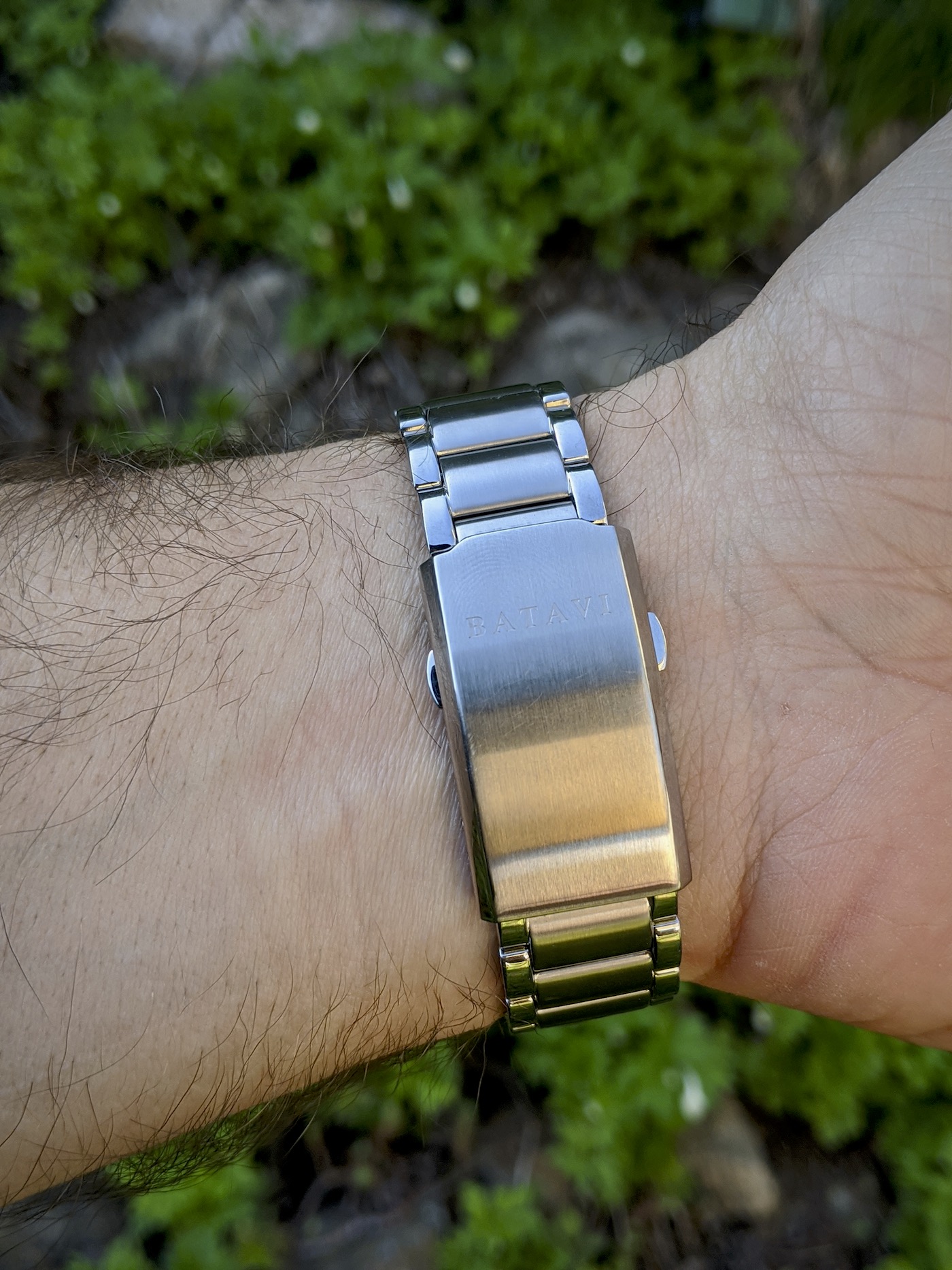
The Kosmopoliet GMT comes mounted on a 3-link stainless steel bracelet featuring a mix of brushed and polished surfaces. Though I typically prefer fully-brushed bracelets, the polished surfaces play nicely off the case. Overall, the bracelet articulates well and is a pleasure to wear; the machined and signed push-button clasp with micro-adjust enhances the sense of quality. My only complaint about the bracelet is that the links are secured by a finicky pin-and-collar system. Of course, with the drilled lugs, the Kosmopoliet GMT is just begging for frequent strap changes. Personally, I think the watch would look fantastic on a rubber tropic strap.

Until this point, everything I’ve described about the case and bracelet has been fairly traditional, but the dial and bezel are where things get interesting. Batavi states that the Kosmopoliet GMT takes on vintage inspiration and, in the current watch market, vintage inspiration typically means diver designs from the 70s. Don’t get me wrong, that’s a fantastic era from which to find design elements, but the sunburst sandwich dial, dauphine hands, and playful colors melded together evoke a California mid-century modern aesthetic, in my eyes. Think Googie architecture and the funky signage of drive-in theatres and diners from the 1950s. Personally, I love it and think it works exceptionally well as a package. Even the oft-maligned faux-vintage lume (or fauxtina) of the hands and hour markers works with the subdued tones of the dial and bezel. The only element I’m not particularly fond of is the red GMT hand. Batavi uses the same red GMT hand on each of the colorways and, while it works on some (like the blue Amsterdam), it feels like one color too many on some of the other dial/bezel combinations. On the Medina, a GMT hand in teal or pink to match the dial would have been welcome. That said, I’m sure some buyers will love the extra pop of color.
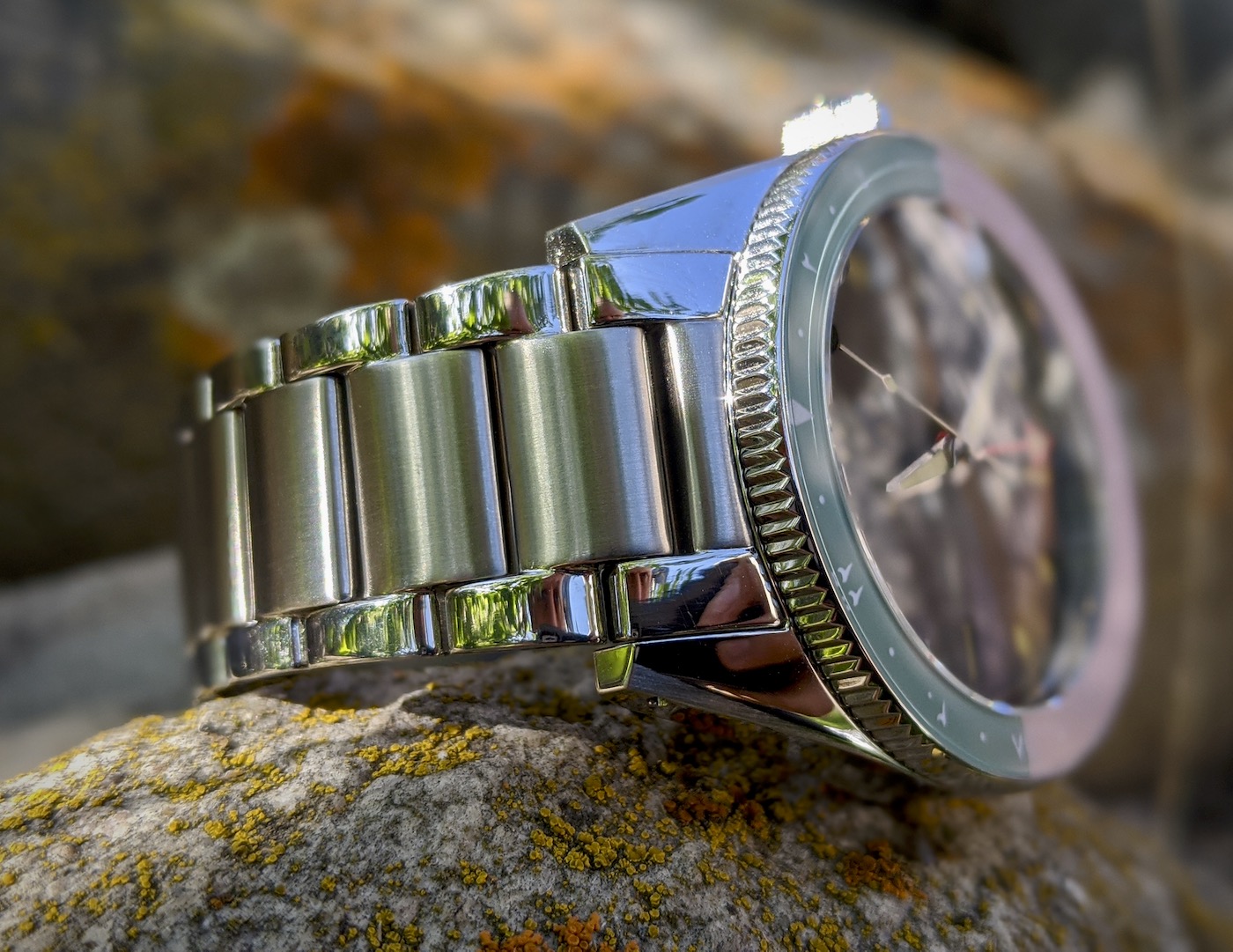
I’ve mentioned the bezel several times, but I want to take a moment to get into some detail. The bezel will feature 120-clicks (the prototype is 60-click) and has a sapphire insert with lumed markers. While the colors are the star of the show, I’m smitten with the traditional Arabic numerals on the Medina. Given that I don’t read Arabic, legibility is an issue, but I’m more than happy to make that sacrifice for the story it tells. Speaking of legibility, the white-on-pink background does make it hard to see some of the markers, but Batavi is making color corrections to the production bezels to enhance readability.
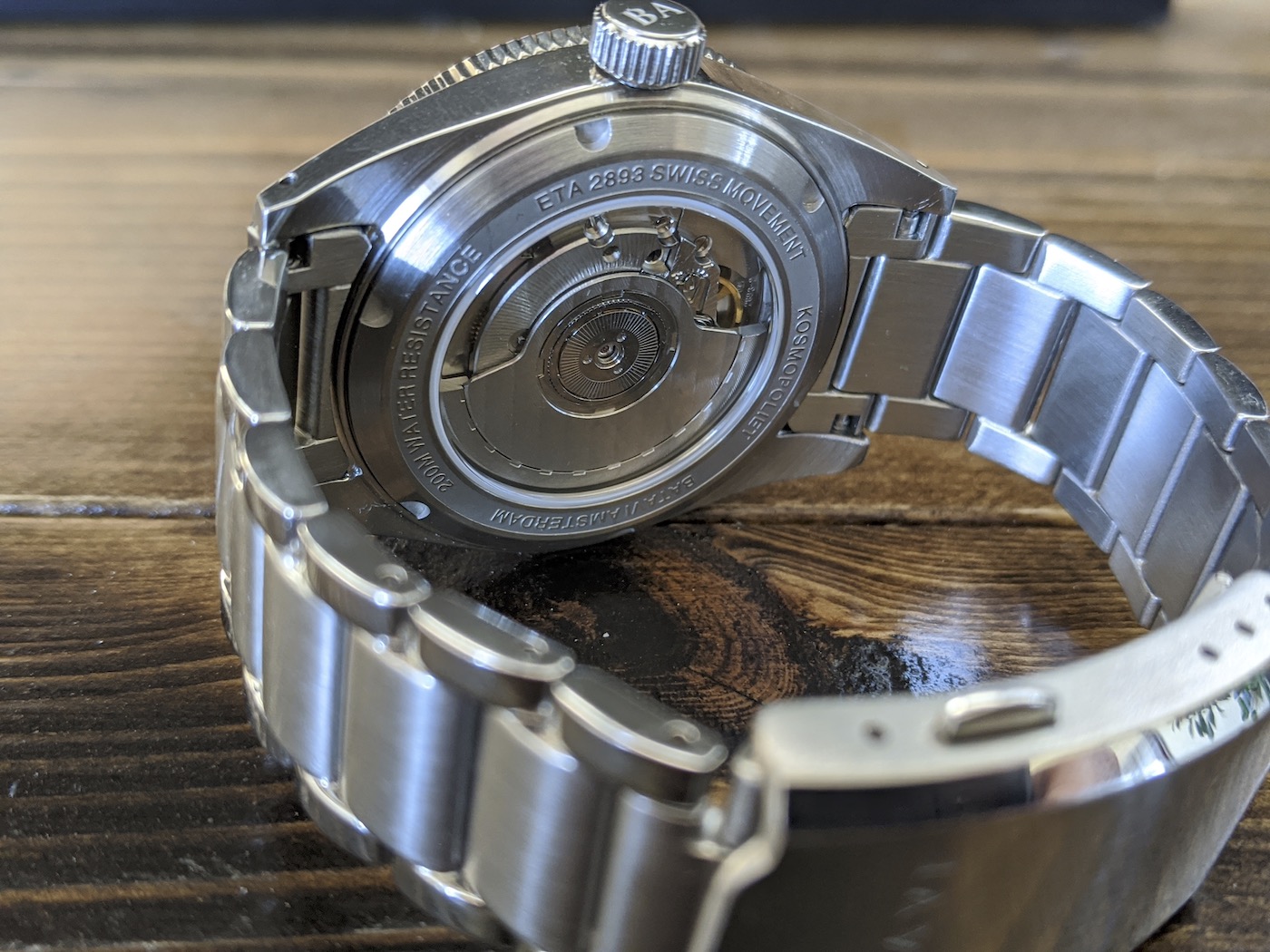
Batavi took an interesting approach to pricing, offering two flavors of automatic movements, a Soprod C125 movement at a lower €609 price point, or for €70 more, an ETA 2893-2 movement. I’ve had good luck with both Soprod and ETA movements, so I’d be perfectly happy with either, but given the easy serviceability of the ETA, I’d spend the extra €70. The ETA 2893-2 is the GMT version of the classic ETA 2892-2 and beats at 28.8kbph, sports 25 jewels, a 42-hour power reserve and, of course, a 24-hour GMT hand for tracking a second time zone.
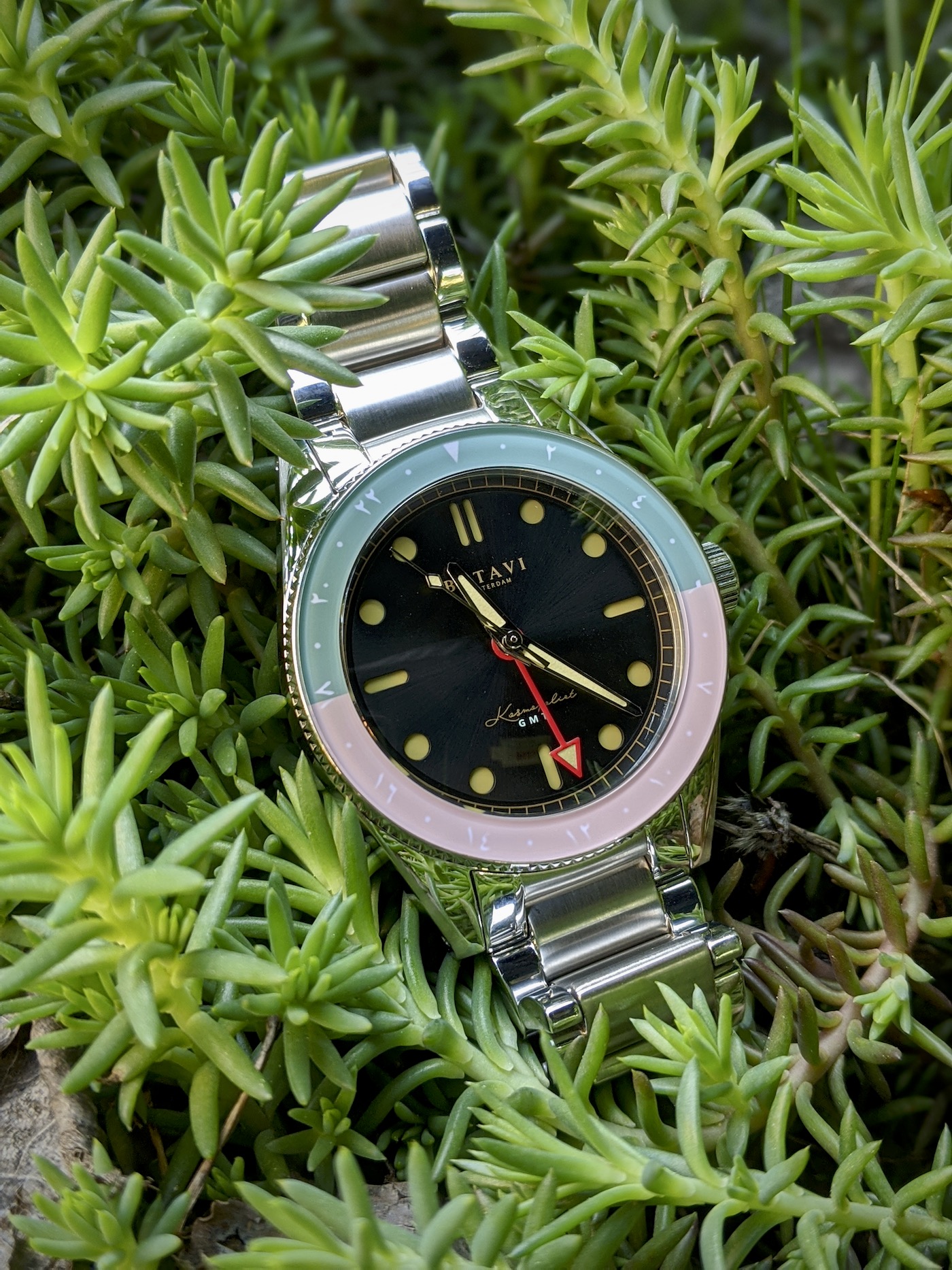
After spending a few weeks with the Batavi Kosmopoliet GMT, I’ve come away quite impressed by the brand’s initial offering. The overall value proposition on this watch is impressive for what you’re getting — Swiss GMT movement, sapphire crystal, caseback, and bezel, quality case finishing, and novel design language. Regardless of whether the aesthetics work for you, it’s a welcome to change to see a brand come to market with a unique design that’s chock full of personality. It’s immediately apparent that Batavi is a passion project for Ugur Mamak and the watches resonate with his vision of a fun, funky, yet imminently wearable watch. The Batavi Kosmopoliet GMT starts at €609. Though the Kickstarter launch is now closed, pre-orders can be placed on Batavi’s website at www.batavi-watches.com.

